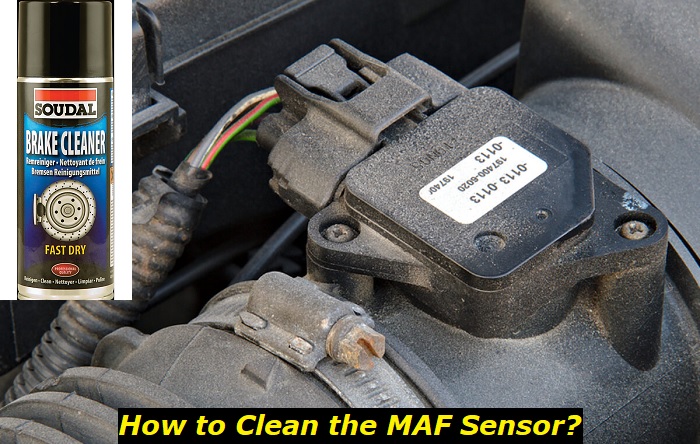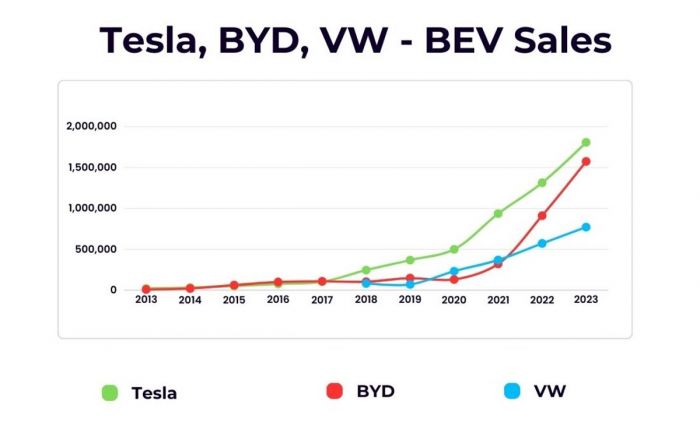There's this sort of urban legend going on in the automotive community that says one of the best ways to clean your mass airflow sensor (MAF) is through the use of a brake-cleaning solution. Sadly, many still believe it to be true despite experts actually discouraging this practice, and some of those who have really tried this had to discover the consequences the hard way.
Engine electrical problems highlights
- Level of urgency:high
- DIY inspection:possible but complicated
- DIY repairs:impossible
- Can you drive?yes, if it starts
- Price of repairs:$150 - $650
- If ignored:no-start, harsh work, warning lights
- Ways to fix:good scanning for codes, professional repairs

How the MAF Sensor Works
The MAF sensor, as its name says, plays an integral part in the management of airflow or the air that enters the engine. It is a part of the electronic fuel injection system of a car.
The MAF contributes to determining and maintaining the right air/fuel ratio in the engine in any given condition. This way, the engine can continue to perform at its optimum level.
The MAF is usually mounted between the air filter and the intake manifold of a car. It determines and measures the mass flow rate of air entering the engine through its sensor, which then feeds this data to the electronic control unit (ECU) of the vehicle. The ECU then uses this data to adjust the amount of fuel injected into the engine and maintain the right air/fuel ratio to ensure the proper delivery of power to the vehicle and avoid performance-related problems along the way.
If the MAF malfunctions, it may give way to problems such as poor fuel economy, engine stalling, and poor acceleration. It is therefore important to have the MAF checked and cleaned regularly and appropriately to ensure its proper functioning.
How Brake Cleaners Work
Brake cleaners are specially-designed solutions to clean hard-to-remove contaminants in the brake assembly. These are effective in eliminating grease, oil, carbon deposits, corrosion, brake fluid, and other impurities that may hinder the proper operation of the braking system or lead to the quick wear of its parts.
Most brake cleaners have an active ingredient called Tetrachloroethylene, which is also referred to as perchloroethylene or PERC. This substance is an efficient dissipator of heat to keep the operating temperature of the braking system within acceptable levels while providing strong protection against corrosion.
The other chemicals present in brake cleaners are high concentrations of petroleum distillates, which are excellent at liquefying and flushing away these kinds of deposits. Many brake cleaners also include solvent-based degreasers, which contribute to the breakdown and removal of tenacious grime.
Brake cleaners, when used correctly, can help improve braking performance and increase the lifespan of your brakes.
Why Brake Cleaners Shouldn't be Used for Cleaning the MAF Sensor
A brake cleaner is certainly very effective in clearing the braking assembly of contaminants to ensure that nothing will hinder its proper operation. However, this yields a different result when applied to your MAF sensor.
- First and foremost, the MAF sensor is very delicate and should not be exposed to any kind of harsh substances. It is composed of components that are prone to corrosion when exposed to chemicals that can potentially damage it. This includes brake cleaning solutions.
- Second, a brake cleaner may also cause the MAF sensor to become overly dry. As a result, the sensor may become brittle and break easily. This can lead to an inefficient operation of your car's engine and reduce its fuel efficiency as well.
- Third, brake cleaners are high in VOCs (volatile organic compounds), which can cause damage to other parts of your engine, such as rubber seals, wirings, and hoses. This is why brake cleaners should not be used for cleaning the MAF sensor.
For the same reasons stated here, don't even think of cleaning the MAF sensor with a carburetor cleaner or a WD-40 lubricant.
How to Clean the MAF Sensor Properly
The best way to clean your MAF sensor is through a MAF sensor cleaner. As an alternative, you can also use a special electronic contact cleaner. Both can effectively get rid of dirt and other contaminants without damaging the delicate components inside the MAF assembly.
Using a MAF sensor cleaner remains the best way to clean your MAF sensor. To use the MAF sensor cleaner, follow these simple steps:
- Wear protective equipment like gloves and safety goggles or glasses.
- Make sure that the engine is off.
- Disconnect the negative terminal of the car battery as an extra precaution to prevent any shocks while working on the engine bay.
- Locate the MAF sensor in between the intake manifold and the air filter.
- Remove the MAF sensor from the engine bay and disconnect it from the wiring harness.
- Spray the MAF sensor cleaner somewhere else at first to regulate the pressure before aiming it at your vehicle's MAF sensor.
- With the pressure regulated in your cleaner, proceed by spraying an adequate amount of it in the MAF sensor.
- If the deposits in the sensor cannot be removed by this method, simply use a cotton swab dipped in an electronic contact cleaner and gently wipe off the contamination with it. You may spray the MAF sensor cleaning solution again afterward.
- Reconnect the MAF sensor to its wiring harness and reinstall it back into the engine bay.
If you're feeling a bit lazy or if you think that your MAF sensor is not seriously contaminated, you can simply spray the cleaner directly on the sensor. Just expose the sensor a little and burst away. While doing this, you should avoid spraying the cleaner directly into hot wires. It's recommended to place a dry towel under the sensor and the wires to absorb any run-off of the solution, too.
Alternatively, you can simply use a contact cleaner if it is all that's available in your garage. Proceed with the following steps:
- Follow the initial steps shown above. Then, detach the MAF sensor from the engine bay and remove its wiring connections.
- Dip a cotton swab into an electronic contact cleaner and carefully clean the exposed surface of the MAF sensor.
- Allow the cleaner to sit on the surface for at least 10 minutes before wiping it off with a soft microfiber cloth.
- Put back the connections of the MAF sensor as you mount it n the engine bay.
Signs that the MAF Sensor Needs Cleaning
One of the most common signs that indicate a need for MAF sensor cleaning is a Check Engine light on your dash. This usually means that there's something wrong with your car's air-fuel mixture, which affects the performance of the engine. Other indicators include sluggish acceleration and rough idling.
If these symptoms persist after performing basic maintenance such as changing spark plugs and filters, then it could be time to clean your MAF sensor. It would also be wise to check if any other components are causing trouble as well before attempting to clean the MAF sensor.
Remember, do not rely just on one indicator when dealing with car problems. Always look out for multiple signs in order to properly diagnose them accurately.
Signs that the MAF Sensor Needs a Replacement
If cleaning the MAF sensor fails, then chances are it's damaged and needs a replacement. You can determine if the MAF sensor is faulty by looking for obvious signs of heavy wear or damage. In addition, you can assess the component by using a multimeter to test its resistance levels. If the readings are outside of their normal range, then you need to replace your MAF sensor immediately.
Another huge factor that will give away a faulty MAF sensor is when your car suddenly refuses to start even after performing basic maintenance such as changing spark plugs and filters. This means that the engine isn't receiving enough air-fuel mixture which ultimately leads to starting problems among other malfunctioning part issues.
When any of these signs present themselves in your vehicle, it's best to have your car checked by an expert mechanic straight away. It would also be wise to have a professional perform the MAF sensor cleaning if the contamination is very serious or replacement if the part is damaged as it is an intricate process and requires special equipment.
The lifespan of a MAF sensor will vary depending on its make and model, but with proper care and maintenance, it can last a long time before needing a replacement. It is also recommended that you clean your MAF sensor regularly so it works in optimal condition for as long as possible.
Do not attempt to fix any car-related technical issues yourself unless you are experienced in doing so. You might end up causing more damage than good if you do so without the proper knowledge or tools. If there's ever a time when you need help understanding how to take care of your car, don't hesitate to contact your dealership or trusted mechanic.
Conclusion
By following the guidelines shown here, you can ensure that your MAF sensor is properly cleaned without causing any damage to its delicate components. Doing this regularly will help keep your car's engine running smoothly while avoiding any performance-related issues.
As a safety reminder, be sure to read the instructions that come with the cleaning solution that you are using and make some adjustments in some of the steps shown above if needed. Likewise, if you have any questions or concerns about cleaning your MAF sensor, it's best to consult a professional mechanic for more accurate advice.
About the authors
The CarAraC research team is composed of seasoned auto mechanics and automotive industry professionals, including individuals with advanced degrees and certifications in their field. Our team members boast prestigious credentials, reflecting their extensive knowledge and skills. These qualifications include: IMI: Institute of the Motor Industry, ASE-Certified Master Automobile Technicians; Coventry University, Graduate of MA in Automotive Journalism; Politecnico di Torino, Italy, MS Automotive Engineering; Ss. Cyril and Methodius University in Skopje, Mechanical University in Skopje; TOC Automotive College; DHA Suffa University, Department of Mechanical Engineering






Add comment